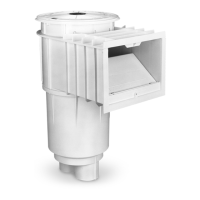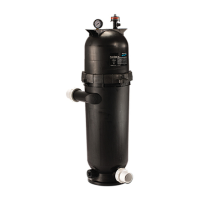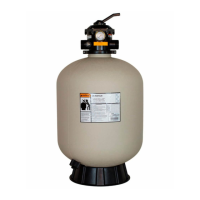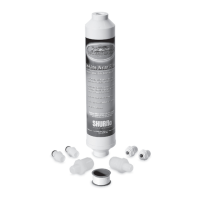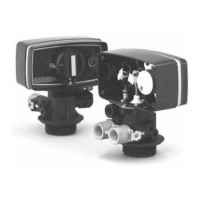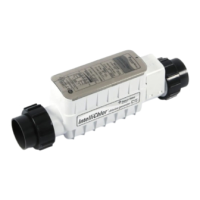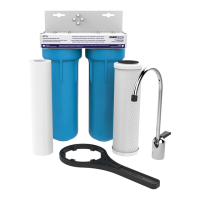12
English
Langelier Saturaon index Factors
How to Add Salt to the Pool
FOR ALL NEWLY CONSTRUCTED OR RESURFACED PLASTER POOLS: Do not operate the SC-75 with newly poured
or resurfaced pool plaster. Salt is a corrosive element and severe salt damage can occur to your pool. Wait at
least ONE (1) MONTH aer construcon to allow plaster to cure before adding salt and operang SC-75. Follow the pool
surface manufacturer’s guidelines for your specic pool.
FOR NEW VINYL LINER POOLS, contact the manufacturer for recommended guidelines before adding salt and operang SC-75.
1. Check salt level in pool water before adding any salt to pool.
2. Determine the amount of salt from the following charts.
3. Slowly pour in the salt around the outer perimeter of the pool for quick and even distribuon.
a. To avoid clogging the lter or damaging pool related equipment and surrounding surfaces, do not add salt through the
skimmer or surge tank.
4. Brush the pool boom and allow water to circulate for 24 hours to dissolve salt completely.
5. Aer 24 hours, verify correct salt level reading by checking the LED indicators on the SC-75 Salt Chlorinator and by a
separate reliable test method.
6. Power on the SC-75 Salt Chlorinator and set the Sanizer Output level to the proper seng to maintain the appropriate
free chlorine levels in the pool water (i.e., within the 2.0 - 4.0 ppm, APSP recommended range).
Pool Water Preparaon
Determining Pool Size (liters of water in your pool)
• Rectangular Pools: Length x width (meters) x average depth x 1000
• Circular Pools: Diameter x diameter x average depth x 785
• Oval Pools: Length x width (meters) x average depth x 893
• Sloping Sides: Mulply total liters by 0.85 = liter capacity.
Never use dry acid (sodium bisulfate) to adjust pH in arid geographic areas with excessive evaporaon and
minimal diluon of pool water with fresh water. A buildup of byproducts can damage the SC-75.

